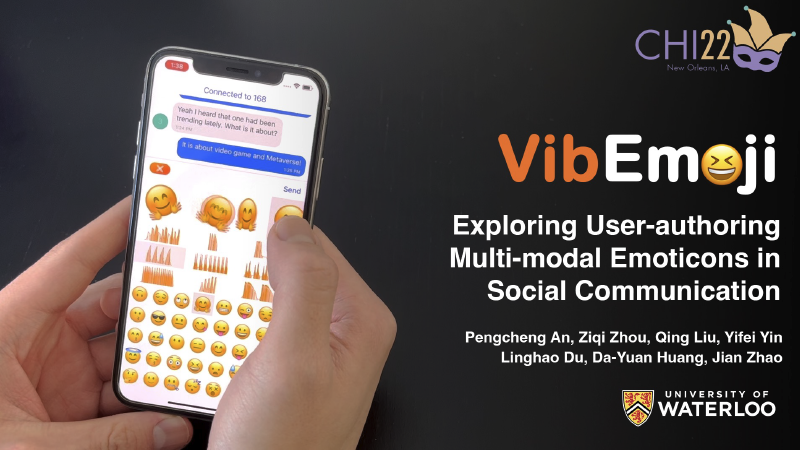August 1, 2022
[By Pengcheng An*, Ziqi Zhou*, Qing Liu*, Yifei Yin, Linghao Du, Da-Yuan Huang, and Jian Zhao✉]
Emoticons are indispensable in online communications. With users’ growing needs for more customized and expressive emoticons, recent messaging applications begin to support (limited) multi-modal emoticons, enhancing emoticons with animations or vibrotactile feedback. However, little empirical knowledge has been accumulated concerning how people create, share and experience multi-modal emoticons in everyday communication, and how to better support them through design.
To tackle this, we developed VibEmoji, a user-authoring multi-modal emoticon interface for mobile messaging. Extending existing designs, VibEmoji grants users greater flexibility to combine various emoticons, vibrations, and animations on-the-fly, and offers non-aggressive recommendations based on these components’ emotional relevance. Using VibEmoji as a probe, we conducted a four-week field study with 20 participants, to gain new understandings from in-the-wild usage and experience, and extract implications for design. We thereby contribute to both a novel system and various insights for supporting users’ creation and communication of multi-modal emoticons.
Related Publications
Pengcheng An, Ziqi Zhou, Qing Liu, Yifei Yin, Linghao Du, Da-Yuan Huang, and Jian Zhao. 2022. VibEmoji: Exploring User-authoring Multi-modal Emoticons in Social Communication. In CHI Conference on Human Factors in Computing Systems (CHI ‘22). Association for Computing Machinery, New York, NY, USA, Article 493, 1–17. https://doi.org/10.1145/3491102.3501940
